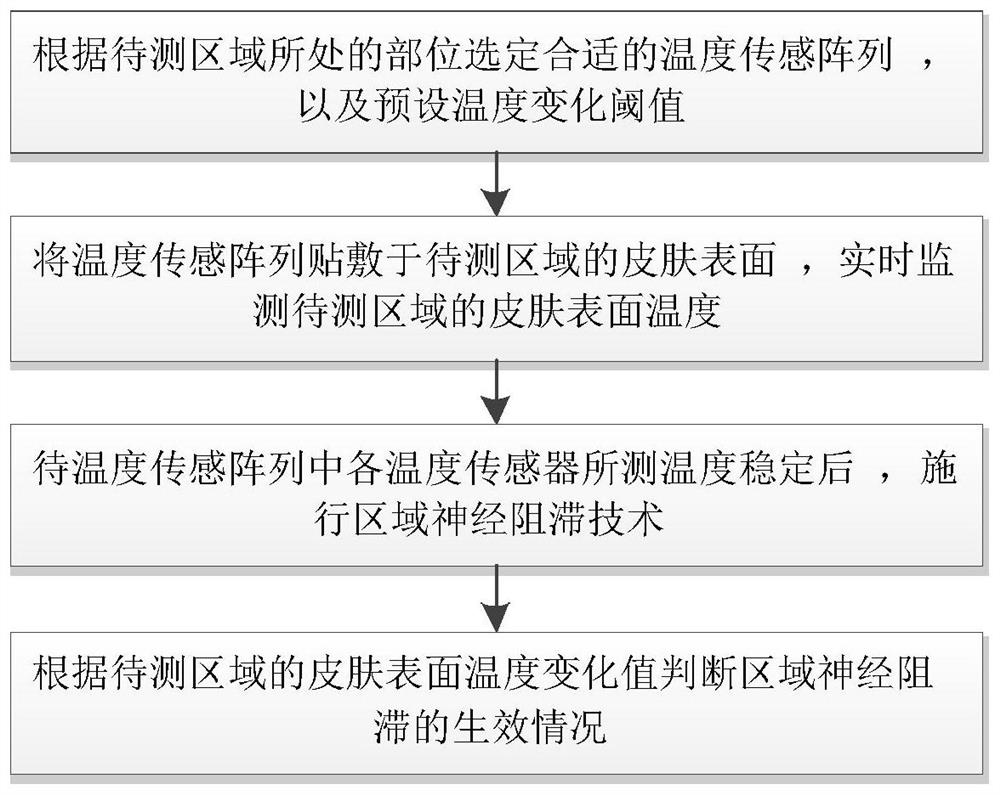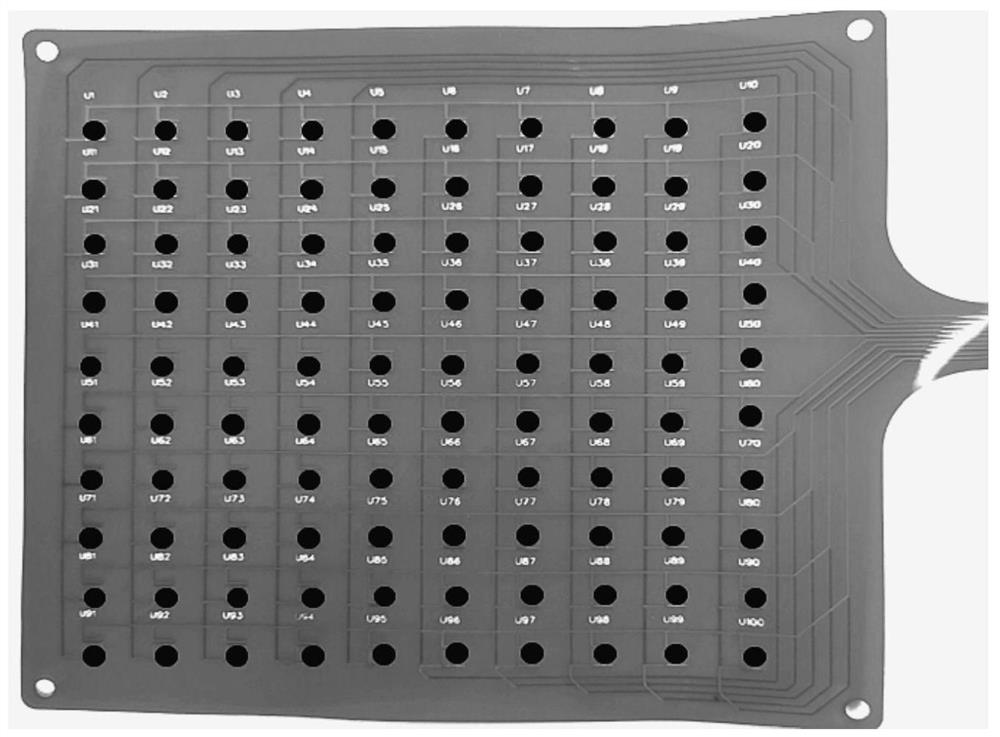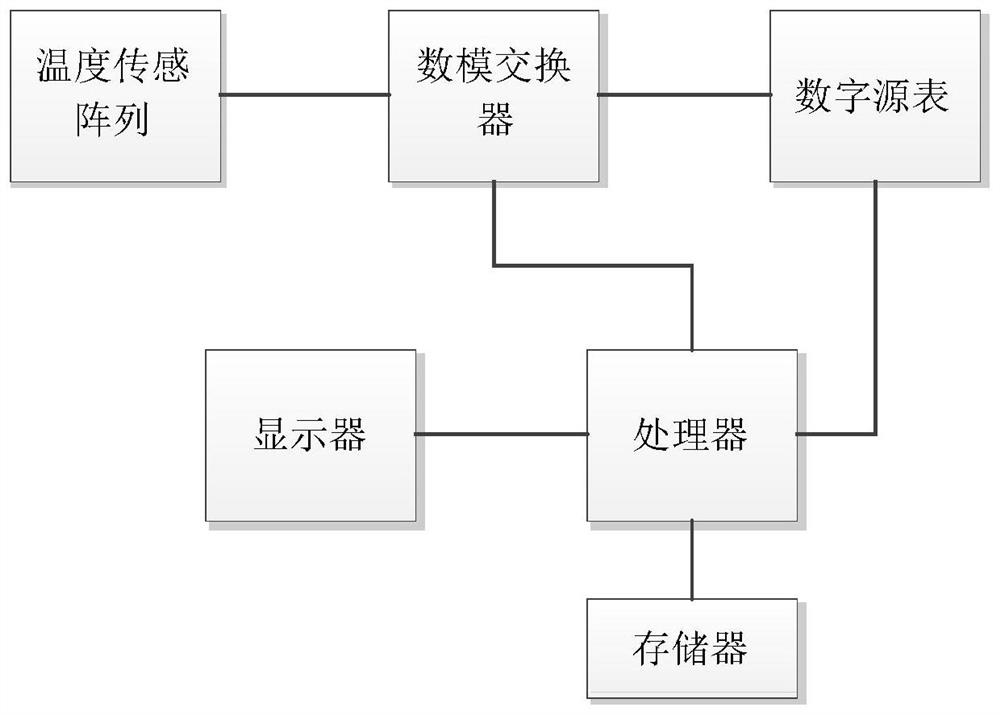Method for detecting regional nerve block anesthesia effect by using temperature sensing array
A sensor array and nerve block technology, applied in the field of anesthesia detection, can solve the problem of inconvenient operation of infrared thermal imager, and achieve the effects of continuous monitoring of drug action range, effective detection, and simple operation
- Summary
- Abstract
- Description
- Claims
- Application Information
AI Technical Summary
Problems solved by technology
Method used
Image
Examples
Embodiment 1
[0045] Such as figure 1 As shown, a method for detecting the effect of regional nerve block anesthesia using a temperature sensing array includes the following steps:
[0046] S1: Select an appropriate temperature sensing array and a preset temperature change threshold according to the location of the area to be measured;
[0047] S2: Apply the temperature sensing array to the skin surface of the area to be tested, and monitor the skin surface temperature of the area to be tested in real time;
[0048] S3: After the temperature measured by each temperature sensor in the temperature sensor array is stable, perform regional nerve block technique;
[0049] S4: Judging the effectiveness of the regional nerve block according to the change value of the skin surface temperature in the area to be measured,
[0050] If the skin surface temperature change value of the area to be measured is lower than the preset temperature change threshold, it is determined that the regional nerve bl...
Embodiment 2
[0054] A method for detecting the effect of regional nerve block anesthesia using a temperature sensing array, comprising the following steps:
[0055] S1: Select an appropriate temperature sensing array and a preset temperature change threshold according to the location of the area to be measured;
[0056] More specifically, the area covered by the regional nerve block technique to be performed and far away from the surgical site is taken as the area to be tested.
[0057] In the specific implementation process, the area to be tested can theoretically be covered by the regional nerve block technique to be performed, and it should be as far away from the surgical site as possible to prevent the operation from being affected.
[0058] More specifically, the temperature sensing array is a flexible temperature sensing array.
[0059] More specifically, the flexible temperature sensing array is made of flexible conductive composite material and encapsulated with polydimethylsiloxan...
Embodiment 3
[0080] Such as image 3 As shown, a device that uses a temperature sensing array to detect human body temperature is used to implement a method for using a temperature sensing array to detect the anesthesia effect of regional nerve block, including a temperature sensing array, a digital-to-analog switch, and a digital source meter , processor, memory and display; where,
[0081] The temperature sensing array is used to detect the skin surface temperature of the area to be measured and output an analog signal;
[0082] The digital-to-analog converter is used to receive the analog signal output by the temperature sensing array and convert it into a digital signal;
[0083] The digital source meter is used to provide voltage for the circuit and measure the resistance of each temperature sensor in the temperature sensing array;
[0084] The processor is configured to compare the received digital signal with the resistance-temperature correspondence in the memory to obtain a corr...
PUM
 Login to View More
Login to View More Abstract
Description
Claims
Application Information
 Login to View More
Login to View More - R&D
- Intellectual Property
- Life Sciences
- Materials
- Tech Scout
- Unparalleled Data Quality
- Higher Quality Content
- 60% Fewer Hallucinations
Browse by: Latest US Patents, China's latest patents, Technical Efficacy Thesaurus, Application Domain, Technology Topic, Popular Technical Reports.
© 2025 PatSnap. All rights reserved.Legal|Privacy policy|Modern Slavery Act Transparency Statement|Sitemap|About US| Contact US: help@patsnap.com



